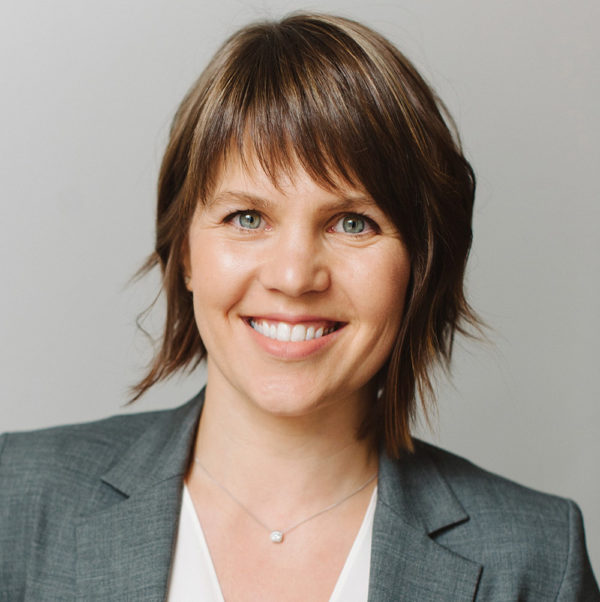One of the things I love most about being a financial planner is helping women retire to a life they love.
Indeed, women face a variety of unique challenges when it comes to planning a secure retirement. As the primary earner and financial decision-maker in my household, I’ve experienced many of these challenges myself.
But I also know that despite these headwinds, it’s possible to take control of your financial future and build a truly rich life. All you need is the right plan—and perhaps the help of an experienced guide.
That’s why in this blog post, I’m sharing six ways women can close the retirement savings gap, so you can be financially ready to retire on your terms.
Why Is There a Retirement Savings Gap?
In 2021, Morningstar published 100 Must-Know Statistics About Women and Retirement. The takeaway of their report was that women are far more likely than men to experience a savings shortfall in retirement due to a variety of factors, including:
- Gender Wage Gap: Women typically earn less than men throughout their careers, making it more challenging to save for retirement. According to the U.S. Department of Labor, women are paid 83.7% as much as men on average, amounting to a difference of $10,000 per year.
- Career Breaks: Women are more likely to take time off from work to care for children or other family members, which can interrupt their earning and saving potential.
- Investing Habits: According to Morningstar, women tend to invest less and hold a larger percentage of cash than their male counterparts, exacerbating the retirement savings gap.
- Longevity: Women generally live longer than men, meaning their retirement savings must last longer. In addition, women are more likely to need long-term care than men and for a longer duration, adding to their potential expenses in retirement.
Meanwhile, a recent T. Rowe Price report found that women tend to contribute less annually to workplace retirement accounts and have significantly lower account balances than men. In fact, the median 401(k) balance for women was 65% less than men in 2022.
As a result, women are generally less confident than men when it comes to their ability to retire comfortably, and many aren’t sure if they can retire at all. Fortunately, there are several steps women can take to close the retirement savings gap.
Steps Women Can Take to Close the Retirement Savings Gap
#1: Negotiate a Higher Salary
One of the reasons men make more than women on average is that men are more likely to negotiate a higher salary. In fact, researchers Linda Babcock and Lara Laschever found that men initiate negotiations roughly four times as often as women.
This is problematic for women since your starting salary and subsequent pay increases can significantly impact your lifetime earnings. Indeed, failing to negotiate your salary can cost you up to $1 million over the course of your career, according to one study.
And that’s just the difference in earnings! If you consider the opportunity cost of having less money to invest during your career, it’s no wonder women are more likely to experience a savings shortfall in retirement than men.
As you progress through your career, be sure to research industry standards and know your worth, so you can confidently negotiate higher pay. Remember, every dollar you earn today has the potential to grow into more retirement savings in the future. So, as uncomfortable as it can be to negotiate with your employer, it’s often worth it in the end.
#2: Boost Your Financial Literacy and Confidence
Numerous studies suggest that women tend to be less financially literate than men based on their ability to answer basic personal finance questions correctly. It’s unclear whether a lack of financial confidence is a cause of these differences in financial literacy, an effect, or both.
Boosting your financial literacy can help you make more informed decisions when it comes to managing your personal finances and preparing for retirement. This, in turn, can help you feel more confident about your financial plan and your ability to achieve your retirement goals.
Here are a few ideas for improving your financial literacy, so you can close the retirement savings gap:
- Seek out free educational resources – From online courses, webinars, blogs, podcasts, and eBooks to financial news and articles, there are countless resources you can leverage to educate yourself on key financial concepts. Websites like Investopedia, Khan Academy, and NerdWallet, for example, offer free educational content on various personal finance topics.
- Attend financial workshops or seminars – Many organizations and financial institutions offer workshops on budgeting, investing, retirement planning, tax strategies, and more. These can be found through local community organizations, women-focused financial groups, and possibly even your employer.
- Partner with a fiduciary financial advisor – Partnering with a financial professional can be a more interactive and personalized way of learning about finances. Fiduciary financial advisors like Align Financial can provide specific guidance on financial planning and investment strategies while helping you make informed decisions for your financial future.
#3: Save More Aggressively
When it comes to closing the retirement savings gap, an obvious solution is to save more aggressively. This can indeed be challenging for many women, especially if you have competing financial priorities. But the good news is it’s not impossible.
First, make sure you’re leveraging the savings tools you have available to you. For example, if your employer offers matching contributions, be sure to contribute enough to your retirement plan to receive the match. This is essentially free money that can significantly increase your retirement savings over time.
You should also review your retirement plan contribution percentage periodically to ensure it reflects your savings goals and salary increases. It’s easy to put this on autopilot and forget about it, so make a point to check in with yourself every so often.
In addition, consider automating your savings contributions to an individual retirement account (IRA). In 2023, you can contribute up to $6,500 to an IRA ($7,500 if you’re 50 or above). These amounts are beyond what you can contribute to an employer-sponsored retirement plan, increasing the dollar amount you can invest on a tax-advantaged basis.
Lastly, you may need to cut back on nonessential expenses or look for ways to increase your income to close the retirement savings gap. For example, you can dine out less often, cancel unnecessary subscriptions, or pause your streaming services temporarily and redirect this money to savings. Alternatively, you may want to start a side hustle, so your income isn’t limited to what your employer pays you.
#4: Make Sure You’re Investing Appropriately for Your Retirement Goals
According to Fidelity’s 2021 Women and Investing Study, more women than ever are taking a seat at the investing table. This is great news since it’s not enough to just save for retirement—you also need to let the power of compounding work for you.
Yet despite these findings, only 19% of women feel confident in their ability to select investments that align with their goals. Meanwhile, 65% of women surveyed say they’d be more likely to invest if they had clear steps to do so.
So although more women are investing, many still lack the confidence to invest appropriately for their long-term goals. This is consistent with Morningstar’s findings that women tend to invest less and hold more cash than men.
Why does all this matter? Over the 30-year period ending December 31, 2022, the S&P 500 generated an annualized return of 9.7%, or 7.2% after inflation. That means if you invested $1,000 in the U.S. stock market at the beginning of 1993, you’d have approximately $16,074 at the end of 30 years, assuming you reinvested all dividends.
In other words, investing is essential for reaching your retirement goals and closing the retirement savings gap. It also ensures your retirement savings keep up with inflation, so your dollars don’t lose value down the road.
#5: Plan for Long-Term Care
As I mentioned above, women are more likely to need long-term care than men and for a longer duration. This is largely due to women living longer on average, increasing the likelihood of living alone and/or developing a condition that requires care.
Unfortunately, long-term care can be expensive. According to Genworth’s most recent Cost of Care Survey, the median cost for a private room in a nursing home is over $100,000 per year. These costs can quickly deplete your savings if you don’t have a plan for long-term care in place.
The following options can help you make your retirement plan more resilient to potential long-term care expenses:
- Long-term care (LTC) insurance – LTC insurance can help cover the cost of various types of care, from in-home services to assisted living or nursing home care. You can customize your policy to your needs, including the duration of benefits and daily benefit amount. However, it’s important to note that premiums can be high, especially if you purchase a policy later in life. Also, not everyone qualifies for this insurance, especially if you have a pre-existing health condition.
- Hybrid life/LTC insurance policy – Another option is a hybrid policy that combines life insurance with long-term care coverage. If you need long-term care, the policy provides a pool of funds you can use to cover certain expenses. Otherwise, it pays out a death benefit to your beneficiaries. While hybrid policies can be more expensive than traditional LTC insurance, they guarantee that either you or your heirs will receive a benefit.
- Self-fund with savings and investments – Given the existing retirement savings gap, this option may present additional challenges for some women. However, if LTC insurance or a hybrid policy aren’t viable solutions, you may need to adjust your savings goals for possible long-term care expenses.
#6: Partner with a Fee-Only Financial Advisor
Closing the retirement savings gap may seem like a daunting task, especially if you’re already feeling insecure about your ability to retire one day. Fortunately, there is a path forward—and you don’t have to go it alone.
Working with a fiduciary, fee-only financial advisor can be invaluable when navigating the complexities of retirement planning. In fact, 86% of women surveyed by Fidelity agree that having their investments managed by a professional reduces financial stress.
At Align Financial, we specialize in helping women achieve their financial goals. Our fiduciary, fee-only approach ensures that we provide objective advice tailored to your individual goals and circumstances.
If you’re ready to take control of your financial future and close the retirement savings gap, please contact us to learn more. We’d love to hear from you.













